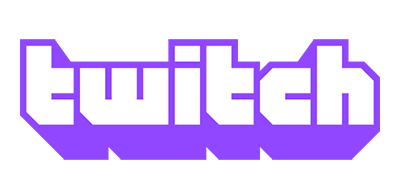With shelter-in-place orders affecting camps nationwide, many camps have turned to virtual gatherings to keep their camp community engaged and encouraged. But with virtual programming comes a variety of new child safety precautions.
We outlined best practices for keeping online programming safe in a previous blog post; now, we take a deeper look at some of the popular platforms and the safety features of each.
Zoom
Zoom is a video communications company that offers video calls, virtual conference rooms, webinars, and more.
Pros
Zoom has several safety measures in place, including allowing hosts to prevent attendees from screen sharing, disabling private chat, and allowing only signed-in users to join calls.
Cons
In recent weeks, due to a rise in activity, Zoom gatherings have fallen victim to what is being referred to as “Zoombombing” — a situation that occurs when someone hacks into the Zoom call, usually sharing explicit content or using graphic language (Lorenz, 2020).
To combat this issue, Zoom offers a long list of safety precautions on its website, including, among others:
- Avoid using your personal meeting ID
- Lock the meeting so that once the meeting has started, no one new can join — even invited participants
- Disable video (Zoom, 2020)

YouTube
YouTube is a popular video streaming service that hosts virtual content from around the globe. YouTube creates accounts for each user called their “YouTube Channel,” where viewers can access all of a user’s content and subscribe to videos from that user.
Pros
YouTube allows channel creators complete control over their own pre-recorded content, which doesn’t allow for interruptions like some virtual platforms. Channel owners can also control whether to allow or disable comments, which can eliminate opportunities for bullying or trolling.
Pre-recorded content also provides a safer environment, says Jason Smith, executive director of YMCA Camp Kitaki. “We are currently only using video sharing formats because, while one way, they do eliminate the concerns of being able to have kids directly interacting with adults. Connecting with kids via the internet is the thing that we have spent the last decade telling staff they should never do (don’t friend on social media, chat with instant messengers, etc.), and we can’t just suddenly be doing it without being very aware of the factors and intentional about the methods so that everyone understands why it’s OK now.”
Cons
Since YouTube is used for all types of entertainment, vlogs, and more, a wide array of content is available on the platform that camps cannot control. However, YouTube does have various parental controls available, so parents can have more control over ensuring their children stay on camper-friendly content.
Twitch
Twitch is a popular platform originally used for gamers to livestream their gameplay for others to watch and learn. Since there was already an elearning component to Twitch (though for gameplay), it can be easily adapted for livestreaming camp events.
Pros
Children are already using Twitch, so this is a space that campers may already understand and know how to use. Your camp audience is already there: You just need to find them.
Cons
Twitch terms of service require users to be at least 13 years old to create an account, so that limits the allowed audience for camps who accept campers 12 and younger.
Twitch also does not appear to have parental control options in place, though some safety features are applied, including chat filters that prevent bad language from being used.
Google Meet (formerly Google Hangouts Meet)
Google Meet is a part of G Suite, the portfolio of services that Google provides (other examples of G Suite services include Gmail, Google Docs, Sheets, and more).
Pros
Google Meet allows you to choose who can join the meeting — meaning you can set it up to only allow guests whom you have invited.
Cons
Like Zoom, Google Meet is not invulnerable to unwanted guests; however, Google has employed several safety measures to combat these issues, including making unique meeting IDs, allowing only hosts to approve guests or mute/remove participants, and more.
Safety Considerations
There are federal guidelines in place for how programs should support kids under the age of 13 online. One important guideline is the Children’s Online Privacy Protection Act (COPPA) Safe Harbor program.
According to iKeepSafe.org, a Federal Trades Commission-approved COPPA Safe Harbor organization, the iKeepSafe COPPA Safe Harbor Certification program “ensures that practices surrounding collection, use, maintenance, and disclosure of personal information from children under the age of 13 are consistent with principles and requirements of COPPA” (iKeepSafe, 2020).
These regulations usually involve keeping children safe by requiring programs have firewalls in place to make sure personal information is not requested or accidentally shared by a child’s device.
An important note: These regulations only apply to organizations that fall under federal regulation, so most camps will not be required to meet these regulations — but should aim to do so as a best practice.
Kendra Perkins, assistant camp director at Roundup River Ranch, shared a list of additional safety precautions based on research Roundup River Ranch has done into virtual programming.
Some of the considerations include:
- Creating a space where campers can connect and participate safely
- Having control of the space and how campers use it in order to prevent a negative or harmful experience such as:
- cyber bullying
- inappropriate content or information shared between campers/staff/volunteers
- campers connecting directly with no supervision
- personal camper information able to be accessed or shared by outside individuals not connected to camp
- personal camper information able to be accessed or shared between campers without the camp’s knowledge
- Safety of staff/volunteers participating in virtual camp
- Proper supervision and adult:camper ratios
- Age minimums of online programs limiting many campers from using appropriately
- Supporting individual needs/limitations of campers as they participate in a virtual camp program
Other Platforms to Consider
While finding fun and new ways to engage with your camp community is important, don’t forget about your tried-and-true methods. Liberty Lake Day Camp Owner/Director Andy Pritikin says Liberty Lake has been leveraging their existing social media accounts — Facebook, Instagram, YouTube, and Pinterest — to connect with their audience because of their ease of use and ability to control content. Because they can post curated content, these platforms allow camps complete control over what information is being presented.
Regardless of what virtual platform you choose to host your gatherings and programming, one of the most important steps you can take is to familiarize yourself with all the safety precautions that platform has in place so you are ready to act should the need arise.
Reference
iKeepSafe. (2020). COPPA safe harbor. iKeepSafe. ikeepsafe.org/certification/coppa/
Lorenz, T. (2020, March 20). ‘Zoombombing’: When video conferences go wrong. The New York Times. nytimes.com/2020/03/20/style/zoombombing-zoom-trolling.html
Zoom. (2020). How to keep uninvited guests out of your Zoom event. Zoom blog. blog.zoom.us/wordpress/2020/03/20/keep-uninvited-guests-out-of-your-zoom-event/
Thank you to the following people for their feedback on virtual programming platforms for this blog post: Kendra Perkins, assistant camp director, Roundup River Ranch; Nate Bankirer, EdD, director of finance and operations, Camp Ramah in Northern California; Tommy Feldman, director, Camp Granite Lake; Jason Smith, executive director, YMCA Camp Kitaki; Andy Pritikin, owner/director, Liberty Lake Day Camp; Mary-Jane Strom, Girl Scouts of Northern California.
Kaley (Belakovich) Amonett is the communications specialist for the American Camp Association.
The views and opinions expressed by contributors are their own and do not necessarily reflect the views of the American Camp Association or ACA employees.







